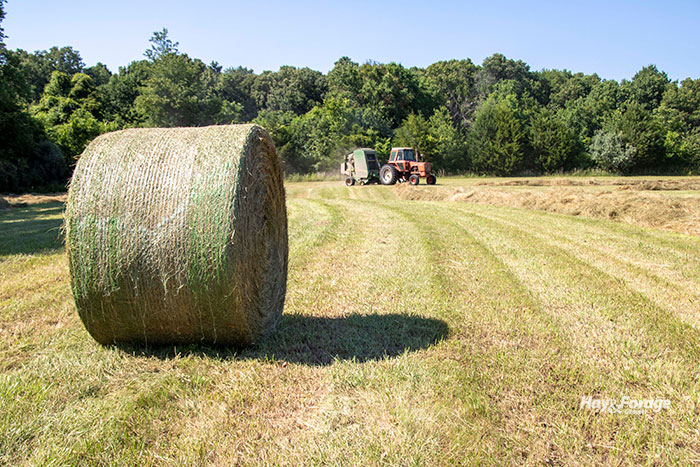Make better hay in 2021 |
| By Mike Rankin, Managing Editor |
|
|
 A new year always brings new opportunities. One of those opportunities is to simply do a better job of making hay, resulting in higher quality and improved yields. Recently, Chris Teutsch analyzed the forage test results from 14,000 hay samples that were run through the Kentucky Department of Agriculture’s forage testing lab. The University of Kentucky forage specialist noted in a recent Off the Hoof newsletter that only 12% of the samples would meet the total digestible nutrient (TDN) requirements for a lactating beef cow. Less than 50% of the samples met the TDN demand for a late-gestation dry cow. “To optimize reproductive efficiency, it is essential that hay fed will maintain adequate condition on cows or that poor quality hay is supplemented appropriately,” Teutsch writes. Of course, making better quality hay can significantly reduce supplemental feed purchases. To this end, Teutsch offers a list of practical considerations for getting this done in 2021. 1. Fertilize and lime according to soil test results. A balanced fertility program is essential for optimizing hay production. Avoid using “complete” fertilizers such as 10-10-10. In hay production, these fertilizers commonly overapply phosphorus and under apply potash. 2. Apply nitrogen early to promote rapid spring growth. Applying 80 pounds of nitrogen per acre in mid- to late March will promote early growth in hay meadows, resulting in higher first-harvest yields. 3. Harvest at the boot stage. The single most important factor impacting forage quality is stage of maturity at harvest. By making the first cutting in a timely manner, this allows time to make a leafy second cutting just prior to the summer months. 4. Mow early in the day. Although sugars tend to be highest in the late afternoon, maximizing curing time is the highest priority in higher rainfall environments. Therefore, hay should be mowed in mid- to late morning after the dew has dried off. 5. Use a mower-conditioner. Conditioning the stems allows for moisture to escape at a faster rate. This shortens curing time and improves the chances of avoiding rain. Conditioning is especially important on first cutting grasses, summer annual grasses, and legumes, all of which tend to have larger stems. 6. Cut a wide swath. Maximizing the swath width shortens the wilting time by exposing a larger portion of the forage to direct sunlight. 7. Rake or ted at a 40% to 50% moisture content. Raking and tedding the forage while it is still pliable helps to reduce leaf loss and maintain forage quality. Once the moisture content is below 40%, leaf losses mount, especially in legumes such as alfalfa and clover. 8. Bale at 18% to 20% moisture. Baling in this moisture range inhibits mold growth and reduces heating. Avoid baling hay that is excessively dry, which allows for a high level of leaf loss. Hay that is above 20% moisture is prone to heating and the potential for combustion. 9. Store under cover and off the ground. Protecting hay from weathering helps to reduce dry matter losses and maintain forage quality. Much of the weathering damage is a result of the hay bale wicking moisture up from the ground. Storing hay off the ground on a stone pad can greatly reduce deterioration. 10. Do not cut hayfields too close. If not properly adjusted, disc mowers can cut very close to the soil surface and this can cause significant damage to cool-season grass stands. Do not mow perennial cool-season grass stands closer than 3 to 4 inches. 11. Apply nitrogen following the first cutting. Following a timely first harvest, apply 60 pounds of nitrogen per acre to stimulate grass regrowth. With adequate rainfall, a second harvest can be made approximately 30 days after the first harvest. 12. Allow hayfields to go into summer with some regrowth. Make sure to allow cool-season hayfields to go into summer with at least 5 to 6 inches of regrowth. This will shade the crown of the plant, moderating its temperature, and reduce soil moisture losses. 13. Apply nitrogen in late summer. As air temperatures moderate in late summer and early fall, apply 60 pounds of nitrogen per acre to stimulate fall grass growth. This growth can be grazed or harvested as needed. 14. Allow plants time to replenish carbohydrates in the fall. Time fall hay cuttings to allow stands to regrow and replenish their carbohydrates prior to winter dormancy. 15. Test hay and supplement accordingly. Testing hay allows you to gauge how well your plan worked and provides the information needed to develop a feed supplementation strategy that will keep condition on cows. |
